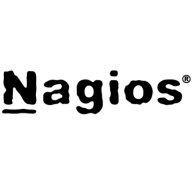

Nagios XI and LogicMonitor are competitive solutions in the network monitoring category. User feedback suggests Nagios XI excels in customization and open-source support, while LogicMonitor leads with automated discovery and ease for cloud environments.
Features: Nagios XI shines with customizable plugins, robust alert systems, and scalability. It's valued for open-source community support and the flexibility to write custom scripts. LogicMonitor offers dynamic dashboards, automated discovery, and valuable anomaly detection features. Its visualizations provide insights quickly, especially favorable in cloud settings.
Room for Improvement: Nagios XI needs enhancements in its configuration interface, along with better clustering and failover capabilities. Its setup can be intricate due to plugin and scripting requirements. LogicMonitor could improve its mapping features, dashboard customization, and streamline its alerts. Its pricing might be challenging for larger deployments, and users seek more advanced application performance monitoring.
Ease of Deployment and Customer Service: Nagios XI benefits from strong open-source community support but has a complicated technical deployment, especially in private cloud settings. Customer service is praised but occasionally slow. LogicMonitor offers straightforward deployment and configuration, especially in hybrid and cloud settings, with comprehensive and responsive customer service.
Pricing and ROI: Nagios XI is a cost-effective option through its free open-source version, though commercial licenses can be costly. It offers good value due to customization and community support. LogicMonitor’s premium pricing offers a comprehensive feature set satisfying enterprise needs, though it may be costly for smaller organizations. Its straightforward licensing and scalability justify its investment.
If the user interface isn’t presenting data well, it becomes difficult to manage when scaling.
It is very stable.
Many tools have poor user interfaces, making them hard to manage and navigate.
The GUI could be improved. It's a bit too basic.
We are using the free, open-source version.
The pricing for the Nagios XI product is good and better than other solutions.
Nagios XI simplifies our setup and reduces the time spent configuring monitoring tools.
The alerting system is very effective.
| Product | Market Share (%) |
|---|---|
| LogicMonitor | 2.1% |
| Nagios XI | 3.5% |
| Other | 94.4% |


| Company Size | Count |
|---|---|
| Small Business | 10 |
| Midsize Enterprise | 9 |
| Large Enterprise | 8 |
| Company Size | Count |
|---|---|
| Small Business | 22 |
| Midsize Enterprise | 17 |
| Large Enterprise | 21 |
LogicMonitor offers flexible IT monitoring with customizable dashboards and robust alerting capabilities. It integrates seamlessly with third-party apps like ServiceNow and provides a single-pane view for diverse IT environments, aiding in proactive issue resolution and enhancing operational efficiency.
LogicMonitor stands out with its capability to monitor diverse infrastructures including Cisco Voice systems, data centers, and virtual environments. Supporting servers, storage, networking devices, and applications, it provides seamless integration with cloud services like AWS and Azure. Users leverage its scalability and flexibility, benefiting from dynamic thresholds, anomaly detection, and detailed visualization. All these features contribute to improved management of IT assets and streamlined operations. Users suggest improvements in mapping, reporting, and automation for remediation, desiring more customizations and an expansive application performance monitoring toolset.
What are LogicMonitor's key features?LogicMonitor is widely implemented across industries, providing monitoring for infrastructure in sectors like telecommunications, cloud computing, and managed services. Managed service providers particularly value its ability to track client environments, deliver proactive alerts, and generate comprehensive reports, while its integration with cloud platforms like AWS and Azure offers users centralized management and visibility into IT assets worldwide.
Nagios XI provides monitoring of all mission-critical infrastructure components, including applications, services, operating systems, network protocols, systems metrics, and network infrastructure. Third-party add-ons provide tools for monitoring virtually all in-house and external applications, services, and systems.
Nagios XI uses a powerful Core 4 monitoring engine that provides users with the highest levels of server monitoring performance. This high degree of performance enables nearly limitless scalability and monitoring powers.
With Nagios XI, stakeholders can check up on their infrastructure status using the role-based web interface. Sophisticated dashboards enable access to monitoring information and third-party data. Administrators can easily set up permissions so users can only access the infrastructure they are authorized to view.
Nagios XI Benefits and Features
Some of the benefits and top features of using Nagios XI include:
Reviews from Real Users
Nagios XI stands out among its competitors for a number of reasons. Several major ones are its integration options and monitoring abilities, as well as its alerting features.
David P., a senior DevOps engineer at EML Payments Ltd, writes, “We use Nagios as a network discovery tool. We use Nagios to maintain our uptime statistics and to monitor our services. It has allowed us to be much more sophisticated in our monitoring and alerting.”
An IT-OSS manager at a comms service provider notes, “Nagios XI has a custom API feature, and we can expose custom APIs for our integration. This is a great feature.”
We monitor all IT Infrastructure Monitoring reviews to prevent fraudulent reviews and keep review quality high. We do not post reviews by company employees or direct competitors. We validate each review for authenticity via cross-reference with LinkedIn, and personal follow-up with the reviewer when necessary.